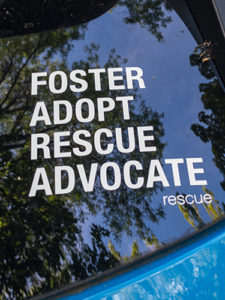By Charlee Bear Staff
 For nearly 2 years, the pandemic caused the world to experience a state of total isolation. The feeling of loneliness hung over our heads, which drove thousands of individuals to adopt pets from shelters across the country. Although the adoption rates surged throughout the pandemic, there are still countless animals who have yet to find their forever homes. Animal fostering is a great way to prepare pets for post-adoption life. It’s the perfect alternative for individuals who aren’t sure if they’re prepared to own their own pet, plus it helps local animal shelters. While animal fostering is extremely beneficial for all parties involved, it can also be difficult at times…so who better to foster animals than certified animal trainers? Below are some tips that will set your clients—and their foster dog—up for success.
For nearly 2 years, the pandemic caused the world to experience a state of total isolation. The feeling of loneliness hung over our heads, which drove thousands of individuals to adopt pets from shelters across the country. Although the adoption rates surged throughout the pandemic, there are still countless animals who have yet to find their forever homes. Animal fostering is a great way to prepare pets for post-adoption life. It’s the perfect alternative for individuals who aren’t sure if they’re prepared to own their own pet, plus it helps local animal shelters. While animal fostering is extremely beneficial for all parties involved, it can also be difficult at times…so who better to foster animals than certified animal trainers? Below are some tips that will set your clients—and their foster dog—up for success.
It’s important for your clients to be patient when fostering pups. Oftentimes, the dog has never experienced a healthy home environment, so they may be anxious when they’re first brought home. Forming a strong bond with a foster dog can be accomplished through acts of praise and positive reinforcement. Your client should reward their foster dog any time they show good behavior, even if it’s as simple as sitting still while your client cooks, cleans or works. Charlee Bear’s Original Crunch treats are sized perfectly for treating or training – plus they contain less than 3 calories per treat, making them a great option to frequently reward dogs. Many pups are food-motivated, so it’s crucial for your clients to keep flavorful, nutritious treats in the house at all times.
 Socializing a foster dog will better prepare them for post-adoption life. Even if your client doesn’t own any pets themself, it’s still necessary to safely and slowly expose the foster dog to other people and animals so they can experience different social settings. Animal Behavior College offers several great training courses, allowing your clients to expose their foster dogs to people and animals of unfamiliarity—all while training them. Another easy way to socialize a foster dog is to take them on walks throughout the neighborhood or local park. This way, your client is allowing their foster dog to get used to new scents and environments. Mouthwatering, freeze-dried Meaty Bites from Charlee Bear can also help motivate your client’s foster dog to stay calm and collected when exploring new faces and places.
Socializing a foster dog will better prepare them for post-adoption life. Even if your client doesn’t own any pets themself, it’s still necessary to safely and slowly expose the foster dog to other people and animals so they can experience different social settings. Animal Behavior College offers several great training courses, allowing your clients to expose their foster dogs to people and animals of unfamiliarity—all while training them. Another easy way to socialize a foster dog is to take them on walks throughout the neighborhood or local park. This way, your client is allowing their foster dog to get used to new scents and environments. Mouthwatering, freeze-dried Meaty Bites from Charlee Bear can also help motivate your client’s foster dog to stay calm and collected when exploring new faces and places.
Learning a foster’s dog personality, including their interests as well as their trigger points, will help the shelter find an owner that’s right for them. Your clients should try their best to keep track of their foster dog’s reactions to different situations. For instance, if your client throws a ball or frisbee across the backyard and their foster dog doesn’t chase it or respond with any excitement, it’s possible that they’re more interested in tug toys or treat puzzles. If your client is fostering a dog for more than a month, they can experiment with different types of high-quality wet and dry food to see which diets and flavors the dog enjoys most. This type of information will help the new owner better prepare, making the transition a lot easier for both them and their new pup.
Fostering a dog can definitely be a challenge, but your clients have all the skills they need to make it an enjoyable experience. They are the best people to foster a dog because they know how to effectively teach good behavior, and how to deal with poor behavior. The tips above will not only benefit your clients, but also the lives of countless foster pups. With the goal being to prepare foster dogs for the most successful post-adoption life, your clients could make a significant impact within the animal rescue community.






